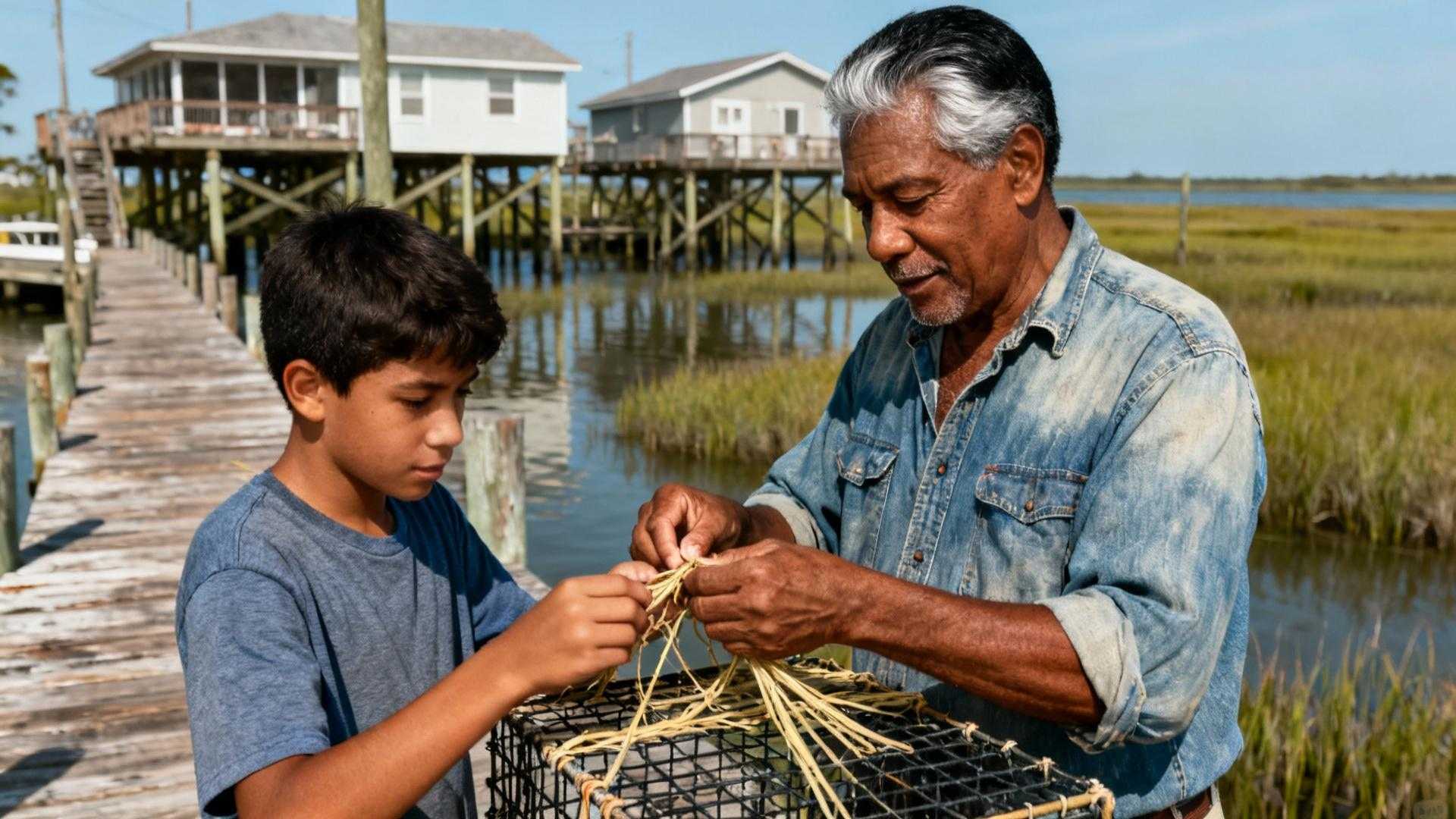Dawn breaks over Isle de Jean Charles at 6:47am. Forty remaining residents wake not to tourist alarm clocks but to water lapping closer against stilted homes. What media calls America’s first climate refugees is what Biloxi-Chitimacha-Choctaw elders call erasure.
Their 22,000-acre heritage reduced to 320 acres. Their forced relocation framed as salvation rather than cultural loss. What locals fear isn’t the rising water.
What Locals Fear More Than Rising Water
Residents describe not fearing floods. They’ve adapted for generations to twice-daily tides. What terrifies them is their stories becoming disaster tourism.
The $48.3 million federal relocation program erases tribal continuity. Government help ignores centuries of land-based cultural practice. Traditional Chief Albert Naquin compares the resettlement process to the Trail of Tears.
Chris Brunet, who moved to New Isle in September 2022, explains the truth. If we still had the land, I wouldn’t be here. In spite of floods and hurricanes, I would have stayed on the island.
Media frames this as climate adaptation success. Residents call it cultural genocide disguised as salvation. Like West Virginia’s memorial sites, locals guard against tragedy exploitation.
The Heritage Being Drowned Isn’t Just Land
The island lost 98% of its original size. But what drowns with the land cuts deeper than acreage statistics.
Shell Middens and Sacred Fishing Grounds Disappearing
Archaeological sites holding 300 years of tribal memory now sit underwater. Ancient shell middens mark where ancestors gathered oysters and told stories. Generational crab traps built by grandfathers disappear beneath rising tides.
Traditional fishing grounds that sustained families for centuries become memory. The knowledge of seasonal patterns, of which waters yield the best catch, cannot transfer to mainland suburbs.
The Last Generation Speaking Island French-Creole
Language death accelerates with relocation. Oral histories scatter across a 40-mile radius to new housing developments. Elders who speak three languages find no one to listen in subdivisions near Schriever.
Friday crab boils become impossible when families live hours apart. The intimate dialect that evolved on this narrow ridge has nowhere to grow roots.
What Resettlement Really Costs
The state purchased 515 acres and built 34 homes for eligible households. Residents began moving to New Isle in August 2022. But promises and reality diverge sharply.
New Homes 40 Miles North: Why Families Hesitate
Erica Billiot reported buying two new toilets in two years because they wouldn’t flush properly. Chris Brunet criticized immediate breakdowns of electrical, plumbing, and structural systems. Rainwater seeps through doorways in supposedly superior housing.
Fishing families now live inland, their livelihoods severed from water access. The psychological cost of fighting for land and lifestyle creates constant mental stress. Similar to how Maya sacred sites face pressure from outside forces.
What Tribal Elders Won’t Leave Behind
Sacred burial grounds remain on the sinking island. Generational knowledge of storm patterns and seasonal rhythms becomes useless in suburban developments. Being America’s first climate relocation carries emotional weight no federal grant can address.
The new settlement itself could become an island if coastal flooding accelerates. Higher, safer ground may prove temporary as predictions of accelerating land loss materialize.
Why Locals Guard This Story From Exploitation
Residents need climate action awareness but resist becoming tragedy ambassadors. Limited access protects against disaster tourism while documenting environmental injustice.
The single road into Isle de Jean Charles floods weekly during high tides. Visitors require tribal permission and cultural sensitivity training. Residents control their narrative against sensationalized media coverage.
The Louisiana government initially believed the population was exclusively tribal members. They discovered much more diversity, indicating inadequate community engagement from the start. Administrative approaches determining eligibility without centering tribal sovereignty create the deepest wounds.
Like Cape Clear Island’s protected storytelling traditions, Isle de Jean Charles guards cultural authenticity from commercialization.
Your Questions About Isle de Jean Charles Answered
Can tourists visit Isle de Jean Charles?
Access requires tribal permission or organized cultural tours. The weekly-flooding road isn’t tourist infrastructure. Respect private property and cultural sensitivity when approaching this sacred community space.
What do residents want people to understand?
This isn’t natural disaster. It’s environmental injustice from oil industry navigation channels, levee projects, and climate neglect. Their relocation should inspire climate action, not pity or disaster tourism consumption.
How does this compare to other climate displacements?
Unlike Pacific island nations receiving international attention, Isle de Jean Charles represents indigenous communities in wealthy nations being erased quietly. Their heritage gets sacrificed to protect coastal cities like Montana’s protected wilderness areas fighting commercialization.
The tide comes in at Isle de Jean Charles twice daily now. What locals fear drowning isn’t their homes. It’s the memory of Friday crab boils, of grandmothers speaking three languages, of a people who survived colonization but might not survive salvation.
